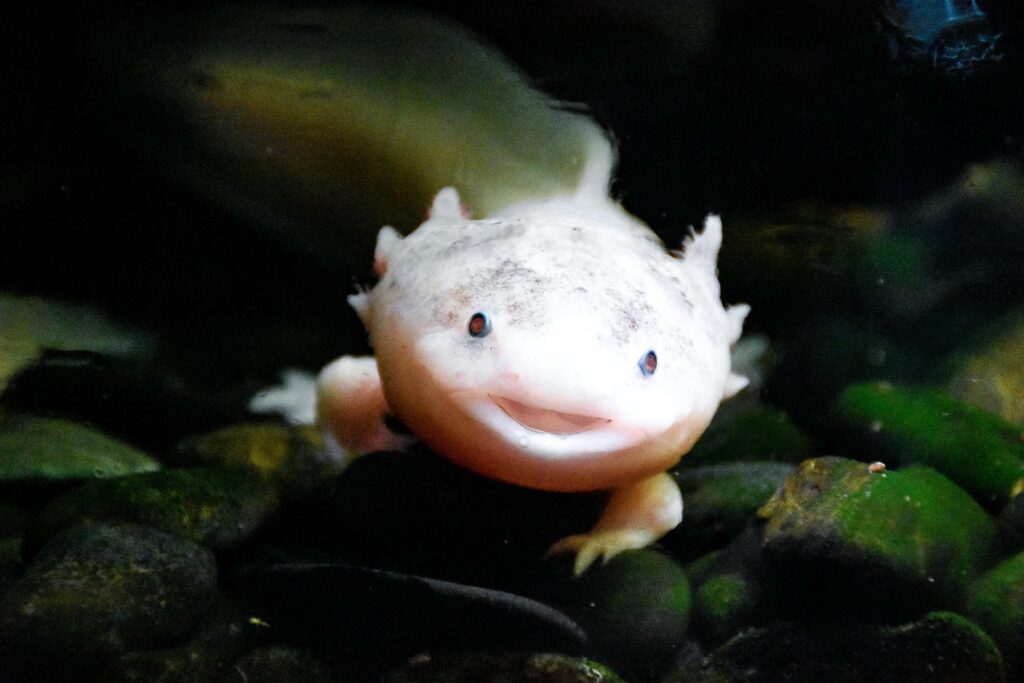Before axolotls were popular on TikTok, I had one — a fully grown, jet-black legend named Terminator. He was 27cm long, calm as a stone, and somehow still intimidating. I adopted him from my cousin, who had raised him with absolute precision. The tank, the water, even the food — all top tier.

There wasn’t dedicated axolotl food in stores back then. Terminator was fed some kind of expensive frozen food that came in cubes — probably meant for turtles. My cousin swore by it. He was that kind of keeper.
I gave Terminator a 3-foot tank, decorated it with pebbles and natural rocks, and added a few temporary goldfish I had nowhere else to put. One of them was huge — people said it was too big for him to eat.
The next morning, the goldfish was gone. And Terminator looked satisfied. Quiet pets don’t mean harmless.
What Axolotls Actually Need
Axolotls aren’t difficult to care for — but they are different. If you treat them like fish, they’ll suffer. These are aquatic amphibians with specific needs that often get overlooked.
Tank size: One adult axolotl needs at least a 20-gallon long tank. Bigger is better.
Substrate: Avoid gravel. Axolotls suck in food from the floor and can accidentally swallow stones. Use fine sand or bare bottom tanks only.
Water temperature: They prefer cold water, ideally between 16–18°C (60–65°F). Warm water shortens their lifespan.
Water quality: Just because axolotls don’t complain, doesn’t mean everything’s fine. Poor water quality is the fast track to skin damage, fungal infections, and stress. You need to test regularly for ammonia, nitrites, and nitrates.
Tip: Do partial water changes weekly, use a dechlorinator, and let the tank cycle before adding your axolotl.
Filter: Use a sponge filter or a baffled hang-on-back model. Axolotls hate strong current and prefer still water.
Recommended sponge filter:
Aquaneat Aquarium Bio Sponge Filter (for tanks up to 60 gallons)
Alternative HOB filter:
AquaClear 50 Power Filter (can be baffled for low flow)
Feeding: Axolotls are carnivores. Feed them earthworms, frozen bloodworms, or high-protein sinking pellets made for amphibians.
Suggested pellets:
Axolotl Big Bites – Fast Sinking Daily Diet for Axolotls
Extras: Add at least one hide (a PVC pipe works), low light, and smooth surfaces. These help reduce stress and mimic their natural hiding instincts.
What I’d Do Differently Now
If I had Terminator again today, I’d skip the gravel. I’d upgrade to fine sand and add more hides. I’d skip the tankmates, no matter the size. And I’d be more proactive about water testing — because axolotls won’t show they’re unwell until it’s too late.
Axolotls aren’t fish. They’re slow, quiet, and weirdly expressive if you learn to read them. And they’re worth keeping — but only if you’re willing to get the basics right.
Final Thought
Years after I rehomed Terminator, I met the people who adopted him. He was still alive — and still a tank.
That axolotl taught me what good care actually means. Even now, when I write about pets, I think of him. Not because he was flashy, but because he lived well — thanks to small habits that added up.
If you’re thinking about keeping an axolotl, do it properly. Keep the water clean. Keep the setup simple. And never assume silence means “everything’s fine.”